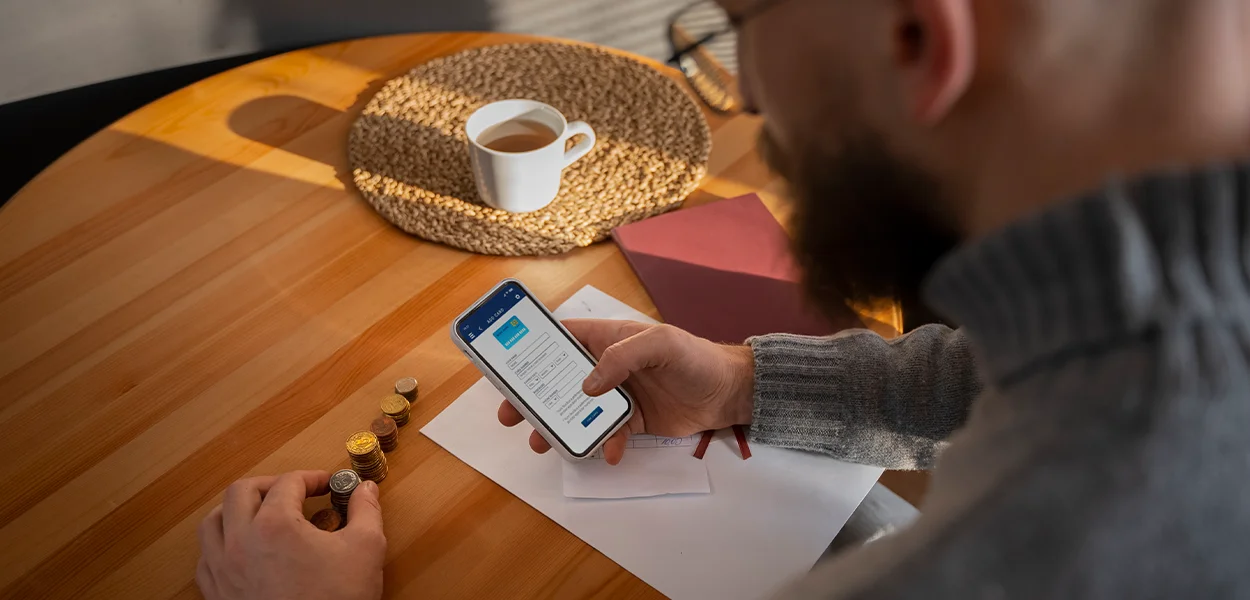How much does it cost to build a split-payments app like Tamara?
How much does it cost to build a split-payments app like Tamara?
Oct 05, 2023 02:28 PM
How much does it cost to build a split-payments app like Tamara?
Oct 05, 2023 02:28 PM

In recent years, the world of finance and payments has witnessed a significant shift towards convenience, flexibility, and user-centric solutions. One such innovation is split payment apps, which allow users to split bills, make payments, and manage their finances seamlessly. Tamara, a popular split payments app, has gained prominence for its user-friendly interface and robust features.
If you're considering building a split payments app like Tamara, one of your first questions is likely to be, "How much will it cost?" While there's no one-size-fits-all answer to this question, we can provide you with a comprehensive overview of the factors that influence the cost of such an endeavor.
Before delving into the details of building a split payments app like Tamara, it's essential to understand what Tamara is and why it has gained popularity in the financial technology sector.
Tamara is a fintech platform that offers buy now, pay later (BNPL) services to consumers and online retailers. BNPL services have become increasingly popular in recent years as they provide consumers with the flexibility to make purchases and pay for them in installments, often with zero or low interest rates. Tamara enables consumers to split their online purchases into interest-free installment payments, typically over a period of 3 to 4 months.
Here are some key features and aspects of Tamara:
User-Friendly Interface: Tamara offers a user-friendly and intuitive mobile app and website interface that allows users to browse partner online stores and choose the BNPL option during checkout.
Seamless Integration: Tamara seamlessly integrates with partner online retailers, enabling shoppers to select the BNPL option during the checkout process.
Instant Approval: Tamara provides instant approval for BNPL transactions, allowing users to complete their purchases without delays.
Zero or Low Interest Rates: One of the key attractions of BNPL services like Tamara is the absence of or minimal interest rates for installment payments.
Flexibility: Tamara offers flexibility in choosing the number of installments and the payment schedule, making it convenient for users to manage their finances.
Risk Assessment: Tamara employs risk assessment algorithms to evaluate users' creditworthiness and determine their eligibility for BNPL services.
Partnerships: Tamara collaborates with a wide range of online retailers, making its BNPL services available to a broad customer base.
Security: Security and data protection are paramount in the fintech industry. Tamara employs encryption and other security measures to safeguard user data and transactions.
Customer Support: Tamara typically offers customer support to address user queries and concerns promptly.
Given the success and popularity of Tamara, it's evident that the BNPL model it represents has resonated with consumers seeking more flexible and accessible payment options when shopping online. This understanding of Tamara's core features and functionality will be valuable when considering the development of a similar split payment app.
The development of a split-payments application like Tamara isn't just about developing; it's also about earning revenues. Once you've identified the costs of building a split-payments application like Tamara, you'll need to figure out how you can recover the costs and turn profits. Here are a few effective strategies for monetizing that are ideal for this type of app.
In-app purchases are the most direct method of generating revenues. For instance, you can permit users to purchase premium features to make transactions easier or more secure.
Another option is to provide the option of a subscription. If you pay a monthly or annual fee, customers can enjoy benefits like no fee for transactions or even higher limits. This could be especially attractive for accounts that are used by businesses or frequent users.
The introduction of a transaction fee could be a reliable way to generate money without impacting the user experience in any way. Because users are conducting transactions via the app, even a modest fee could add up to a large amount.
Collaboration with retailers or online stores can create a new source of revenue. In these types of agreements, you could offer retailers a commission on each purchase made using your split payments application. This is a win-win situation because it provides retailers with an additional avenue to sell.
Advertising within the application may generate extra income; however, this could impact your user's experience if it's not done carefully. So, it's crucial to find the right equilibrium.
If you understand the cost of developing a split-payment app such as Tamara and then implementing one or more of these monetization strategies, you will not only make your investment back but also generate a long-term revenue stream.
The methods you choose to use must be in line with your overall business objectives and the demands of your intended audience. If you do this, you can create an app for split payments that is not just functional and profitable, but it also makes money.

Creating an app like Tamara, a buy now, pay later (BNPL) service, involves a well-defined development process. To bring your vision to life and build a successful BNPL app, follow these key steps:
Market research and analysis Identify the target audience: Determine the specific demographic and psychographic characteristics of your target users.
Competitor Analysis: Analyze existing BNPL services like Tamara to understand their features, user experience, and market positioning.
Market Trends: Stay updated with current trends and emerging technologies in the fintech and payment industry.
Define the app's core features: Based on your research, decide on the essential features your BNPL app will offer.
Create a Business Plan: Outline your business model, revenue streams, and monetization strategy.
Technical Planning: Decide on the technology stack, development platforms, and infrastructure required for your app.
Wireframing: Create wireframes to visualize the app's layout and structure.
UI Design: Design the user interface, ensuring it's user-friendly, visually appealing, and aligns with your brand.
Prototyping: Develop interactive prototypes to test the app's usability and gather feedback.
Front-End Development: Build the user interface and user interactions.
Back-End Development: Develop the server, database, and payment processing components.
Integration: Integrate with payment gateways, external APIs, and partner online retailers.
Security Implementation: Implement robust security measures to protect user data and financial transactions.
Functional Testing: Ensure all features work as intended.
Security Testing: Conduct security audits and vulnerability assessments.
Performance Testing: Test the app's responsiveness and scalability under various conditions.
User Acceptance Testing (UAT): Invite beta users to test the app and gather feedback for improvements.
App Store Submission: Prepare the app for submission to app stores (Apple App Store, Google Play Store) and follow their guidelines.
Server Deployment: Deploy the server infrastructure to support the app's functionality.
Launch Strategy: Plan a marketing and launch strategy to create buzz and attract initial users.
Bug Fixes: Address any issues and bugs reported by users.
Continuous Improvement: Gather user feedback and prioritize feature enhancements.
Security Updates: Stay vigilant about security updates and data protection.
Monitoring and Analytics: Continuously monitor app performance, user behavior, and key metrics.
Data Privacy: Ensure compliance with data protection regulations, such as GDPR or CCPA.
Financial Regulations: Comply with financial regulations and obtain any necessary licenses or approvals.
Terms and Conditions: Create and communicate clear terms and conditions to users.
Customer Support: Provide responsive customer support through multiple channels, including chat, email, and phone.
Feedback Collection: Encourage users to provide feedback and actively listen to their suggestions.
Marketing Strategy: Execute your marketing plan to acquire new users and retain existing ones.
User Engagement: Implement strategies to keep users engaged with the app.
Partnerships: Seek partnerships with online retailers to expand your app's reach.
Analytics Tools: Utilize analytics tools to gain insights into user behavior, preferences, and conversion rates.
Data-Driven Decisions: Make informed decisions based on data to optimize the app's performance and user experience.
Scalability: Ensure your infrastructure can handle increased user demand as your app grows.
New Features: Continuously innovate by adding new features and functionalities to stay competitive.
Developing an app like Tamara is a complex and multifaceted process that requires careful planning, execution, and ongoing commitment. Collaboration with experienced developers, designers, and legal experts is crucial to navigate the intricacies of the fintech industry and deliver a secure, user-friendly, and successful BNPL app.
App Complexity: The complexity of your app plays a significant role in determining the cost. The more features and functionalities you incorporate, the higher the cost will be. Consider whether you want to offer additional features like expense tracking, budgeting tools, or integrations with other financial services.
Platform Selection: The choice of platforms (iOS, Android, or both) affects development costs. Developing for both platforms typically costs more than targeting a single platform. Additionally, the choice of cross-platform development frameworks, like React Native or Flutter, can impact costs.
Design and User Experience: Investing in a well-crafted UI/UX design is essential for user engagement. However, high-quality design work can be costly. Consider whether you'll need custom designs or can use pre-designed UI elements to save on costs.
Development Team: The size and expertise of your development team significantly influence costs. You can choose to hire in-house developers, which can be expensive, or outsource development to a software development agency, which can provide cost-effective solutions.
Integration with Payment Providers: Integrating with payment gateways and financial institutions involves technical complexities and costs. You may need to pay licensing fees or transaction fees to these providers.
Security and Compliance: Security measures, such as encryption and compliance with financial regulations like PCI DSS, come with associated costs. Ensuring the safety of user data is non-negotiable in the financial industry.
Testing and Quality Assurance: Thorough testing and quality assurance are essential to identify and fix bugs and ensure a smooth user experience. Testing costs depend on the complexity of your app.
Post-launch Maintenance: Once your app is live, ongoing maintenance and updates are necessary. Consider the long-term costs associated with app maintenance, bug fixes, and feature enhancements.
While it's challenging to provide an exact cost without detailed project specifications, a rough estimate for building a split payment app like Tamara can range from $100,000 to $500,000 or more. The final cost will depend on the factors mentioned above as well as your geographic location, as development costs vary by region.
To get a precise estimate, it's advisable to consult with software development experts who can assess your specific project requirements and provide a detailed cost breakdown.
Building a split-payments app like Tamara can be a lucrative venture in the evolving financial technology landscape. However, it's crucial to understand that the cost of development can vary significantly based on the features, complexity, and quality of your app.
To ensure a successful project that meets your budget and goals, consider partnering with an experienced software development agency like PerfectionGeeks. They can guide you through the entire development process, from concept to launch, providing you with a tailored solution that aligns with your vision and budget. With the right approach and expertise, you can create a powerful and user-friendly split payments app that competes effectively in the finance industry.
Strategy
Design
Blockchain Solution
Development
Launching
Testing
Maintenance
Contact US!

Plot 378-379, Udyog Vihar Phase 4 Rd, near nokia building, Electronic City, Phase IV, Sector 19, Gurugram, Haryana 122015
Copyright © 2025 PerfectionGeeks Technologies | All Rights Reserved | Policy
Contact US!

Plot 378-379, Udyog Vihar Phase 4 Rd, near nokia building, Electronic City, Phase IV, Sector 19, Gurugram, Haryana 122015
Copyright © 2025 PerfectionGeeks Technologies | All Rights Reserved | Policy